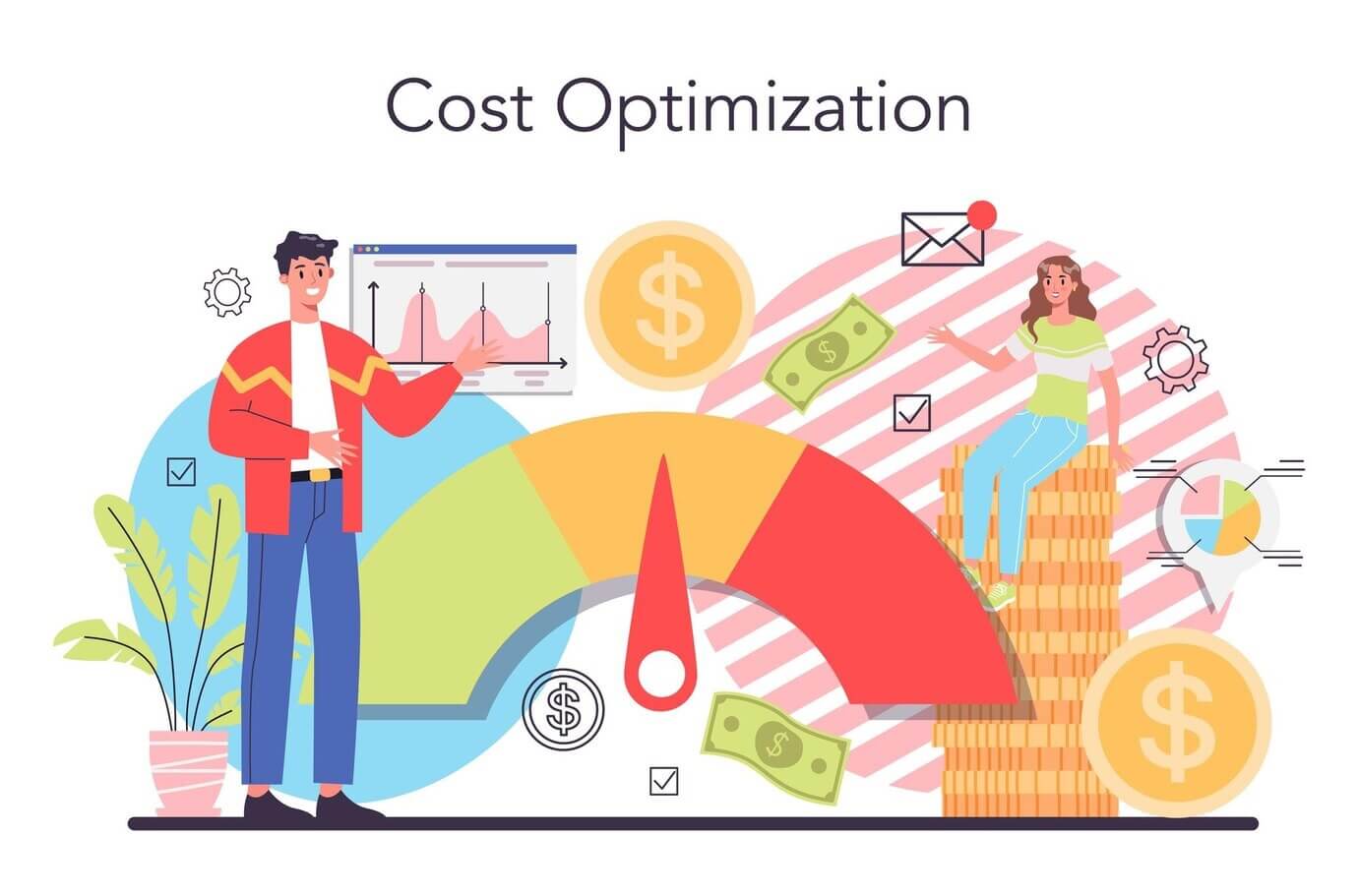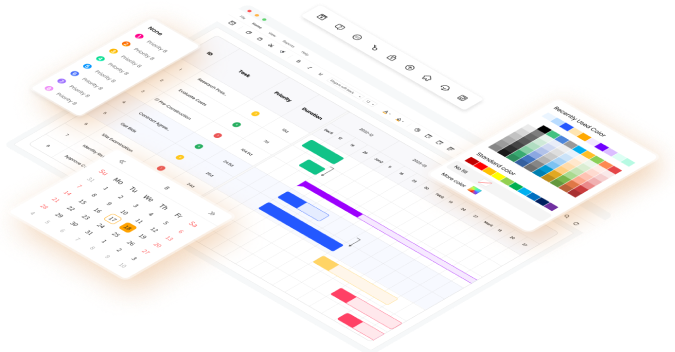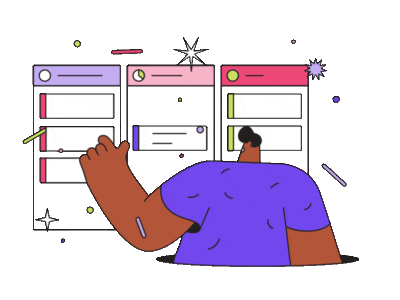
Mastering the art of budgeting to control costs in project management is essential. It empowers project managers to navigate the landscape of diverse cost analysis. The article explores key strategies and the types of costs in project management.
By delving into comprehensive budgeting techniques, professionals can steer projects toward success. The page will also discuss proactive management approaches. Knowing the approaches ensures optimal resource allocation and mitigates financial risks. Read on below to uncover the intricacies of cost control.
In this article
What Is Project Cost Management?
Cost management in project management involves planning, estimating, and budgeting. It also includes financing, funding, managing, and controlling costs. The goal is to complete a project within the approved budget. It encompasses various key aspects to maintain financial discipline and achieve project objectives:
- Cost planning. Establish a budget that outlines the estimated costs of project activities.
- Cost estimation. Assess and approximate the monetary resources required for project tasks.
- Allocating funds to project components, providing a financial roadmap.
- Financing and funding. Secure and manage financial resources to support the project.
- Cost control. Monitor project expenditures, identify variances, and implement corrective actions to stay within budget.
- Performance measurement. Evaluate project performance against budgeted costs to gauge efficiency.
- Risk management. Anticipate and mitigate potential cost-related risks to avoid overruns.
- Resource allocation. Efficiently distribute financial resources to maximize project output.
Cost management is a strategic discipline essential for project success. It ensures financial stability and accountability throughout the project lifecycle.
Types of Cost in Project Management
Project cost management is the heartbeat of successful project execution. It encompasses various cost categories essential for financial control and project success. Understanding these cost types is pivotal for effective budgeting and resource allocation:

- Fixed Costs:
Fixed costs remain stable irrespective of project activity. It includes annual software licenses or permanent staff salaries. Fixed costs provide a foundational financial structure.
- Variable Costs:
Variable costs fluctuate with project scale and activities. It covers expenses like hourly wages for temporary staff, adapting to the dynamic nature of the project. Variable cost factors in raw materials or utilities as well.
- Direct Costs:
Direct costs are specific to project tasks. It covers elements like employee salaries dedicated to the project. It can also be for transportation expenses during targeted deliveries.
- Indirect Costs:
Indirect costs contribute to project operations. It encompasses items such as administrative salaries and office utilities. Indirect costs provide support without being task-specific.
- Sunk Costs:
Sunk costs are expenditures already incurred and irrecoverable, regardless of project success. It includes initial research expenses and obsolete technology investments. They can guide decision-making with lessons from past financial commitments.
Strategic Role of Project Cost Control
Effective cost control in project management is crucial to maintain financial discipline. A robust cost management system enables the tracking of expenses. It also ensures that the project remains within its approved budget.

1. Advantages of Project Cost Management
Project managers can complete projects on time and within the allocated budget by controlling costs. Below are its advantages.
- Preventing overruns. Rigorous cost management prevents budget overruns. It ensures that the project stays on a financial course.
- Avoiding risk. By monitoring expenses, it helps identify and mitigate potential cost-related risks. A dedicated tool to manage project costs can reduce the likelihood of financial setbacks.
- Aiding future planning. Insights gained from cost management inform future planning. It can facilitate more accurate budgeting and resource allocation in subsequent projects.
2. Challenges in Project Cost Management
Monitoring expenditures allows for real-time adjustments. It prevents budget overruns and contributes to project efficiency. However, cost management also poses issues in resource use. Below are the challenges that aid in strategic decision-making and future planning.
- Lack of Resources. Insufficient resources, both human and financial, can hinder effective cost management. It can also limit the ability to control and track project expenses.
- Inaccurate Estimation. If cost estimates are inaccurately calculated, it can lead to budget discrepancies. It undermines the effectiveness of cost management efforts.
- Outdated Technology. Relying on outdated technology for cost management tools may impede efficiency and accuracy. It can also compromise the effectiveness of the cost control system.
How To Calculate and Control Project Costs
Managing project costs is a critical aspect of successful project delivery. Two prominent approaches to cost management involve adopting a flat rate or tracking hours. Both the flat rate and tracking hours approach have unique advantages and considerations. Let's break them down below.

1. Flat Rate Management
In this method, a fixed cost is established for the entire project. It provides simplicity and predictability in financial planning.
The flat rate approach offers clarity to both clients and project teams. It's ideal for projects with well-defined scopes. However, accurate initial estimations are important to prevent potential budget overruns. The method is particularly suitable for projects with stable and defined requirements.
2. Hourly Tracking
Hourly tracking involves monitoring and recording the time spent on project tasks. The approach benefits projects with evolving scopes, where flexibility is crucial.
Hourly tracking provides a detailed breakdown of resource use. It aids in transparent billing and precise client invoicing. However, it demands meticulous timekeeping and can pose an issue when predicting project costs. The method is for projects that experience changes and adjustments throughout their lifecycle.
How To Create an Effective Cost Management Plan in 4 Steps
Project cost management involves a multifaceted approach to ensure financial efficiency and success. Project managers can control costs by employing a cost management plan. Here's how in 4 simple steps.

Step 1:Plan the Resources
Resource planning involves reviewing the project scope and identifying necessary resources. Planning the resources needed for a project can include:
- People who are needed to execute the project,
- Equipment and tools,
- The required time needed for each task.
Everything that enables you to complete the project is considered a resource. To develop a thorough resource plan, you need to determine:
- The required number of employees or personnel for a particular project.
- The necessary experience and qualifications they should have.
- The type of equipment necessary for the project.
- The precise timelines for each activity.
Despite diligent resource planning, unforeseen challenges may arise. Acknowledge the potential unavailability of certain resources and adapt plans as needed.
Step 2:Estimate the Cost of Resources
After crafting a resource plan, estimating the cost of allocated resources becomes crucial. This step involves determining the cost of each resource, considering variable factors. To ensure the utmost accuracy in your calculations, consider:
- Tracking project time and expenses.
- Monitoring or tracking the activities of all project participants.
- Real-time tracking to understand the allocation of funds.
Step 3:Determine the Cost Budget
The core of project cost management lies in determining the cost budget. It involves summing up all costs for tasks and milestones. It can aid in the comparison of actual costs to estimates. Aligning cost budgeting allows for more accurate budget estimates. It reduces your exposure to the risk of overruns.
Step 4:Control the Costs
Cost control is the ongoing process of monitoring and recording costs as the project progresses. This step ensures that appropriate actions can be taken in response to adjustments. To manage costs, follow these key steps:
- Ensure the project stays within scope.
- Collaborate with stakeholders.
- Adhere to the schedule and manage your time.
- Use project management software for enhanced control.
Maximizing Efficiency: Software Solutions for Cost Control
In contemporary project management, employing software is integral to effective cost control. Among the various tools available, Gantt chart makers stand out. Their cost management capabilities offer visual timelines that help comprehensive project planning.
Choosing a Gantt Chart Maker
Gantt charts enable project managers to identify critical paths. They can help manage dependencies and ensure efficient resource use. Here's what you should look out for when choosing a Gantt chart tool:
- User-friendly interface. Select a Gantt chart maker with an intuitive interface. It streamlines project planning and cost tracking.
- Collaboration features. Opt for a tool that supports seamless collaboration among team members. It enhances communication and project transparency.
- Integration capabilities.Choose a Gantt chart maker that integrates with other project management tools. This ensures a cohesive workflow.
- Budgeting functionality.Look for a Gantt chart maker with robust budgeting features. It allows for accurate cost estimations and real-time tracking.
Recommendation: Wondershare EdrawProj – A Versatile Project Management Tool
EdrawProj empowers project managers to control costs with ease. Its intuitive design simplifies the Gantt chart creation process. It provides a visual roadmap for project tasks, timelines, and associated costs. For enhanced project efficiency and cost control, EdrawProj is a reliable choice.

How EdrawProj Helps You Control Costs in Project Management
Below are the dynamic capabilities of EdrawProj. Discover efficient ways to streamline tasks and manage control costs in project management.
Centralized Project Planning: EdrawProj offers a centralized hub for viewing all project plans. Its dynamic interface connects the table list and Gantt view. It enables effortless scheduling, organization, and tracking of projects.

Effortless Task Management: EdrawProj's intuitive drag-and-drop functionality simplifies work processes with a single click. Rank, adjust task start dates, and change durations. These features empower anyone to create professional-looking Gantt charts with ease.

Customizable Gantt Charts: Design distinctive and appealing Gantt charts with EdrawProj's color-coding system. Assigning colors allows for easy tracking and visualization of project statuses.

Comprehensive Reporting: EdrawProj offers separate reports for resources and task statuses. You can generate cost reports with 10 alternative views to summarize project information.

Conclusion
Effective control of costs in project management is paramount for successful project outcomes. The ability to handle different types of costs is essential in maintaining financial discipline. Successful cost management in projects involves proactive strategies to mitigate risks as well.
By mastering cost control techniques, you ensure efficient resource allocation. It can foster project success and control the costs of project management. It can lead to the achievement of objectives within stipulated budgets as well. This highlights the importance of skilled cost management in the complex field of project execution.
A professional Gantt chart tool to plan, manage and track your projects, process and resources.



